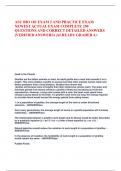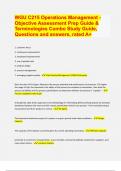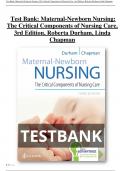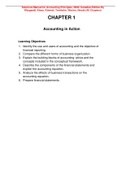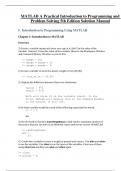Exam (elaborations)
ASU BIO 182 EXAM 2 AND PRACTICE EXAM NEWEST ACTUAL EXAM COMPLETE 250 QUESTIONS AND CORRECT DETAILED ANSWERS (VERIFIED ANSWERS) |ALREADY GRADED A+
- Course
- Institution
ASU BIO 182 EXAM 2 AND PRACTICE EXAM NEWEST ACTUAL EXAM COMPLETE 250 QUESTIONS AND CORRECT DETAILED ANSWERS (VERIFIED ANSWERS) |ALREADY GRADED A+
[Show more]
